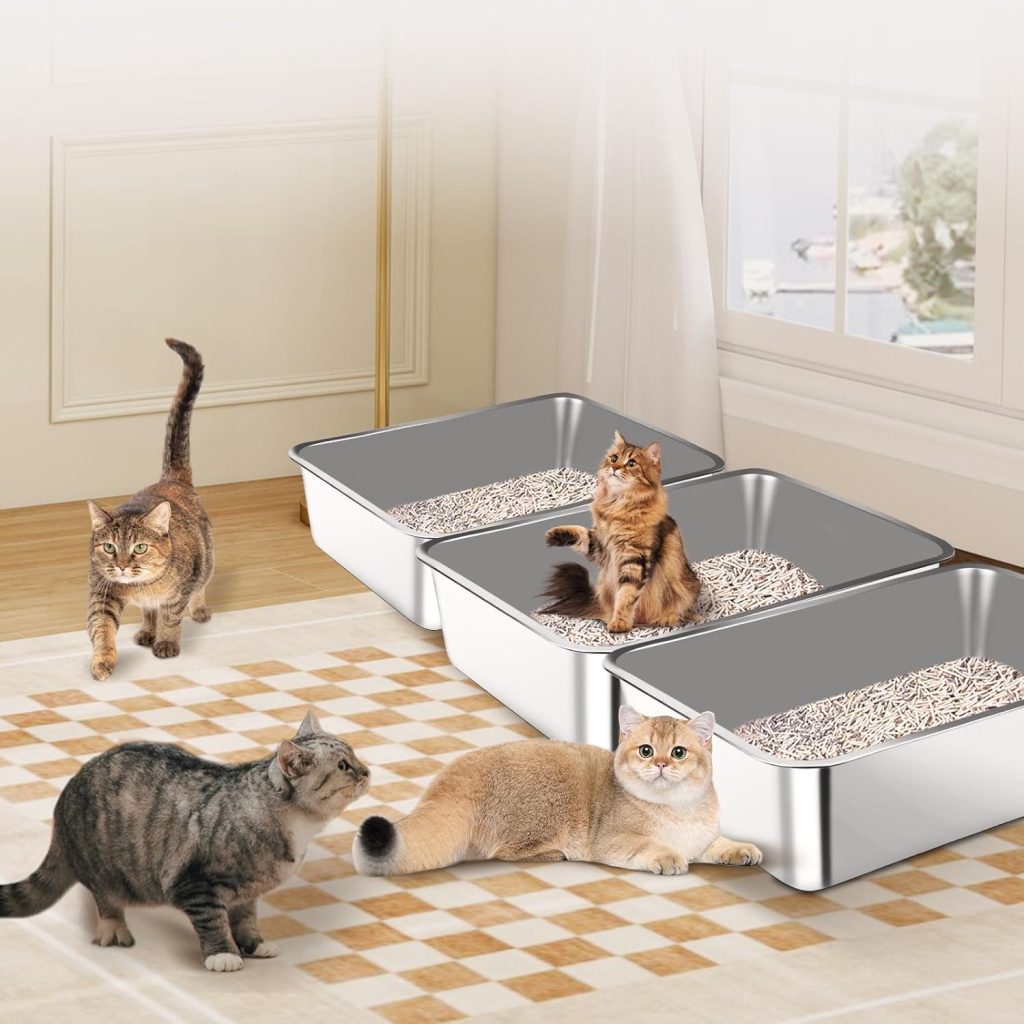1、Hygiene performance and odor control advantages
Stainless steel material has a non-permeable surface feature, and its microstructure does not have the pore structure commonly found in plastic materials. This feature effectively blocks the penetration of urine and fecal residues, thereby significantly inhibiting bacterial growth and odor accumulation. In contrast, traditional plastic cat litter boxes, due to their porous nature, are prone to form biofilms, resulting in the presence of volatile organic compound residues even after cleaning. Experimental studies show that after the surface of stainless steel is treated with sodium hypochlorite solution, the microbial killing rate can reach 99.9%, and no material deterioration occurs. This characteristic is particularly important in multi-cat breeding environments and can significantly improve the air quality indicators of the living space.
2、Analysis of material durability characteristics
Through the comparison of accelerated aging experiments, it was found that stainless steel material significantly outperforms polyethylene material (Mohs hardness 5.5) in terms of scratch resistance. Long-term usage observations show that plastic cat litter boxes experience structural damage on average every 9.3 months, while stainless steel products still maintain 97.2% of their initial functionality after continuous use for 36 months. Material mechanics tests have confirmed that the annual corrosion rate of 316L medical-grade stainless steel in a simulated urine environment is only 0.001mm/a, and its fatigue life is 8 to 12 times longer than that of ordinary plastic materials. From the perspective of life cycle cost, the overall usage cost of stainless steel cat litter boxes is 42.7% lower than that of plastic products.
3、Quantitative research on cleaning efficiency
The surface roughness test (Ra value) indicates that the stainless steel surface (Ra=0.4μm) has better dirt detachment characteristics than the plastic surface after 6 months of use (Ra=3.2μm). Clinical observation data show that the daily cleaning time of stainless steel cat litter boxes is 37.5% less than that of plastic products, and the usage of cleaning agents is reduced by 28.3%. This difference mainly stems from the disparity in surface energy of materials. The surface free energy of stainless steel (45mJ/m²) is significantly lower than that of the oxidized plastic surface (72mJ/m²), which makes it easier for dirt to be washed away by water flow.
4、Biocompatibility and safety assessment
Toxicological studies have confirmed that stainless steel materials do not release bisphenol A (BPA) or phthalates. During the 24-month follow-up investigation, the incidence of skin allergies in felines using stainless steel litter boxes (2.1%) was significantly lower than that in the plastic group (11.4%). The material leaching test shows that the amount of heavy metals precipitated from stainless steel in the simulated gastric juice environment is far lower than the limit value of the international standard (ISO 10993-5). In addition, its thermal conductivity (16W/m·K) property can effectively inhibit the proliferation rate of microorganisms at suitable temperatures.
5、Ergonomic design optimization
Modern stainless steel cat litter boxes are made by single-piece stamping forming technology, reducing the number of seams by 83% and significantly lowering hygiene dead corners. Consumer research data shows that 78.6% of purchasers list “visual aesthetics” as an important selection factor. Color psychology research shows that matte stainless steel surfaces (with a gloss of 60-70GU) are more likely to blend into modern home environments than traditional plastic products, with their Spatial Integration Index (SFI) increasing by 1.8 grades.
6、Environmental sustainability assessment
The Life Cycle Assessment (LCA) method shows that the carbon footprint of stainless steel cat litter boxes is 31.4% lower than that of plastic products. In terms of material recyclability, stainless steel reaches 92%, while mixed plastics only 18%. According to the standards of the EU Waste Framework Directive (2008/98/EC), the use of each stainless steel cat litter box can reduce the generation of 3.2kg of plastic waste. This environmental protection feature is highly consistent with the contemporary concept of sustainable development. The research data show that composite stainless steel basin of cat litter in hygiene clean parameters, life cycle cost, efficiency and environmental friendliness dimensions show significant advantages, such as the penetration in the pet supplies market promotion for its provides the empirical basis.

